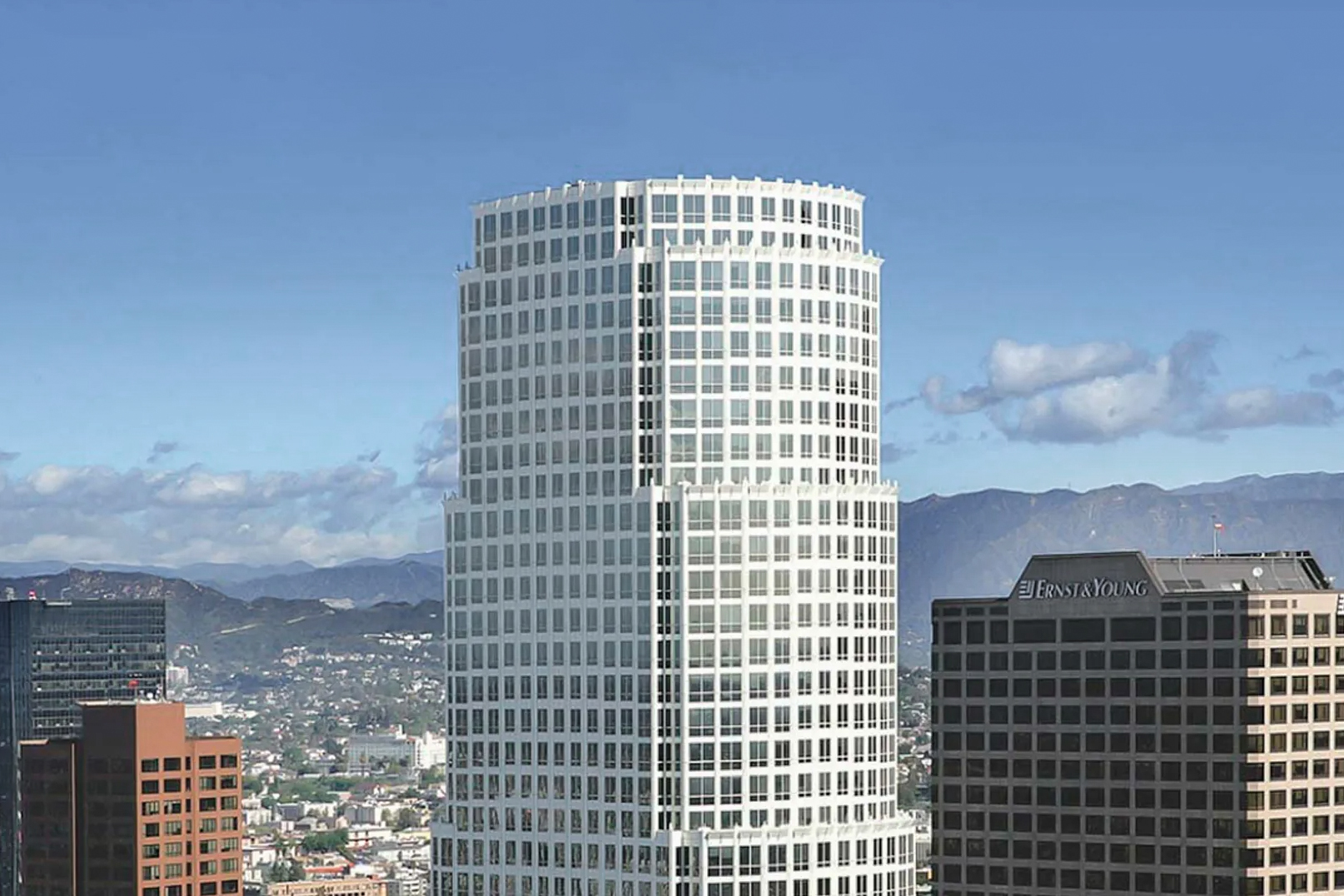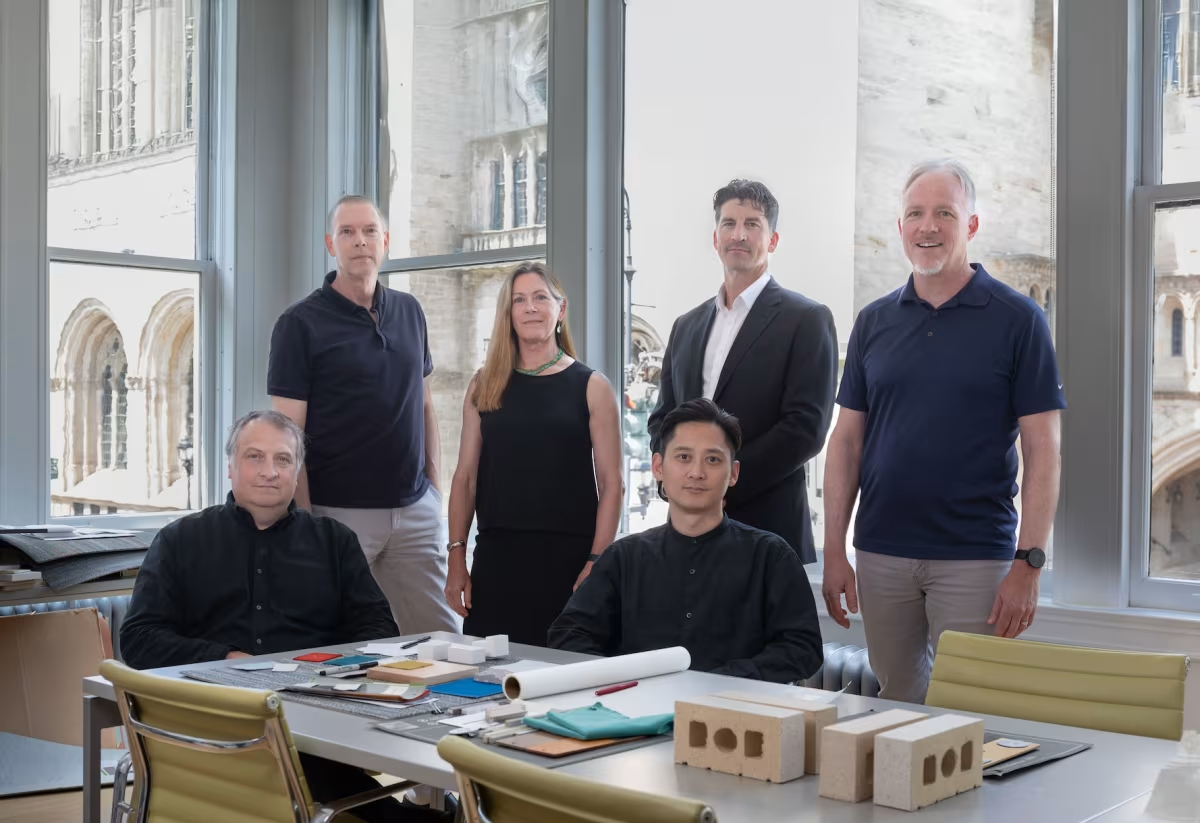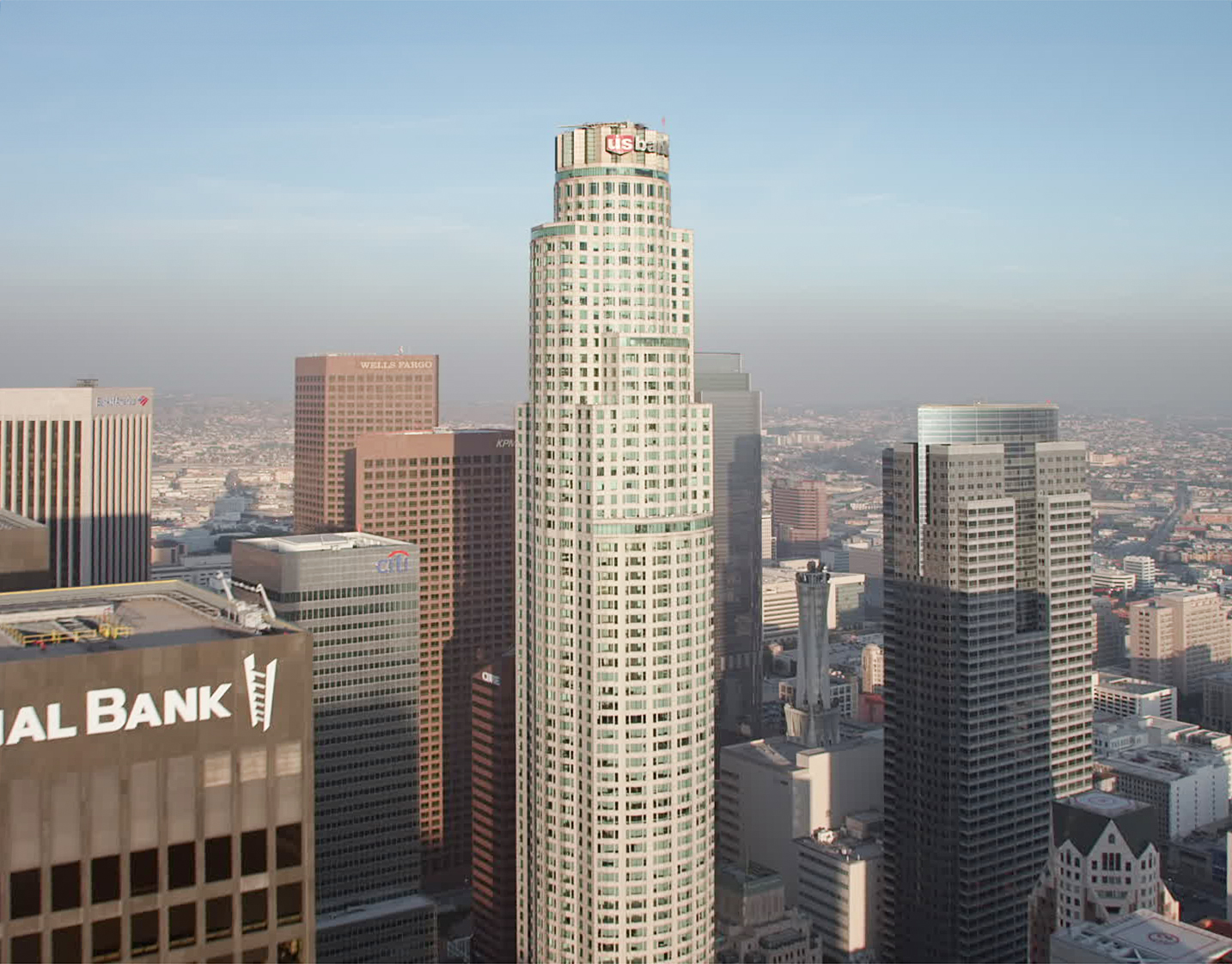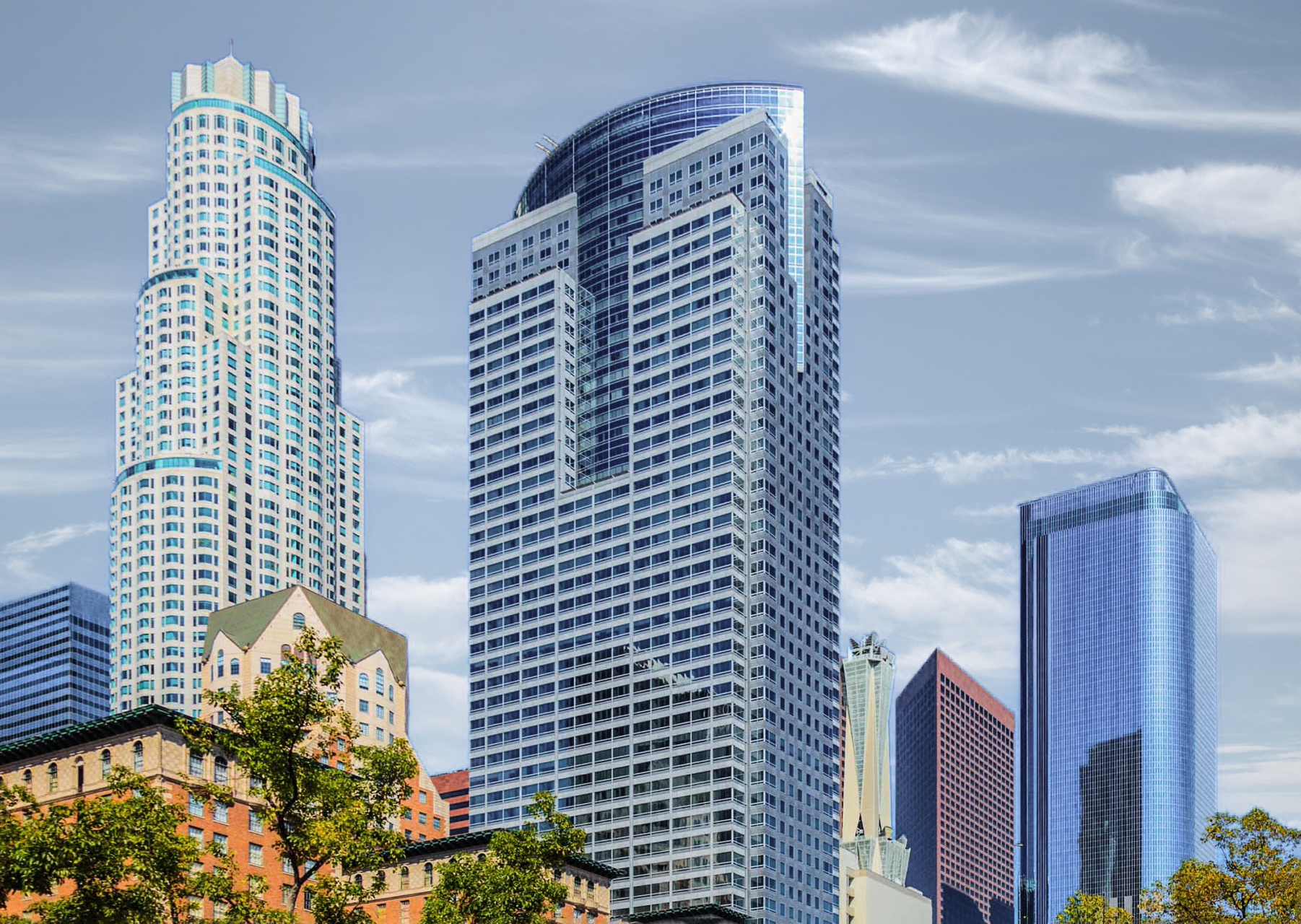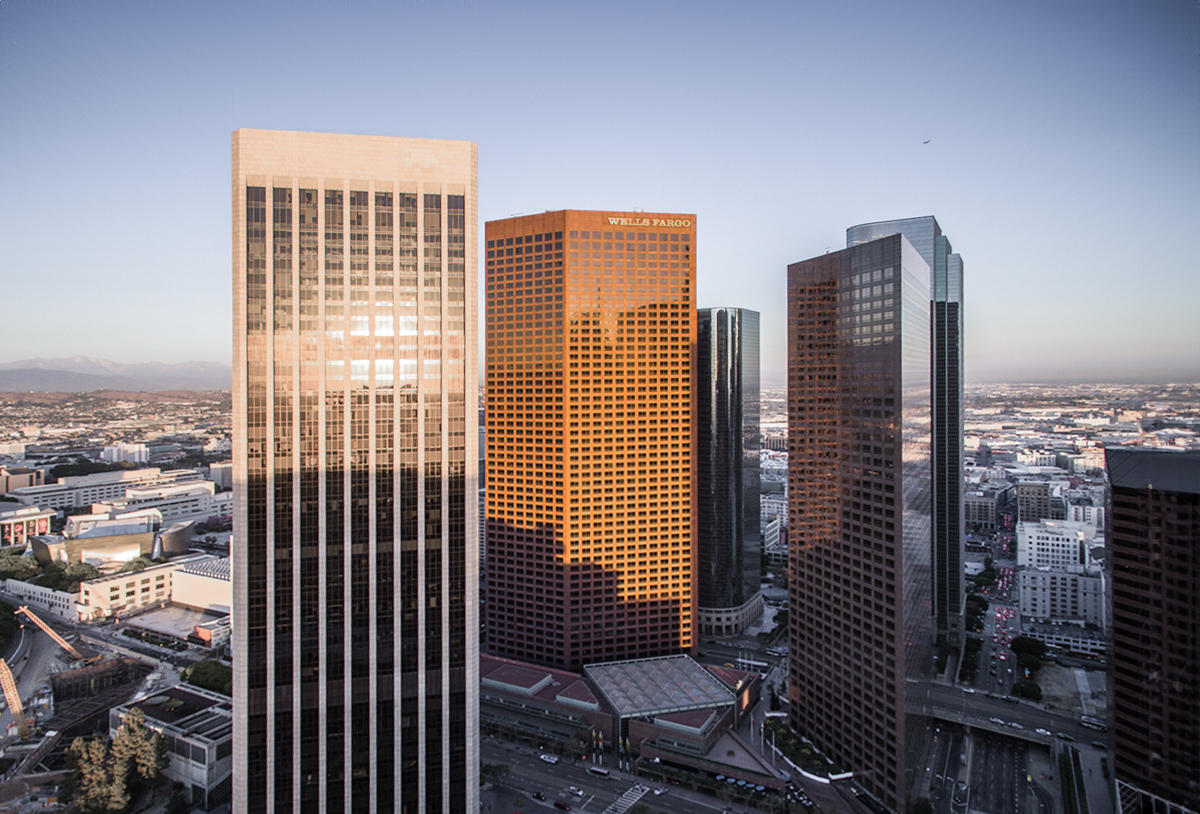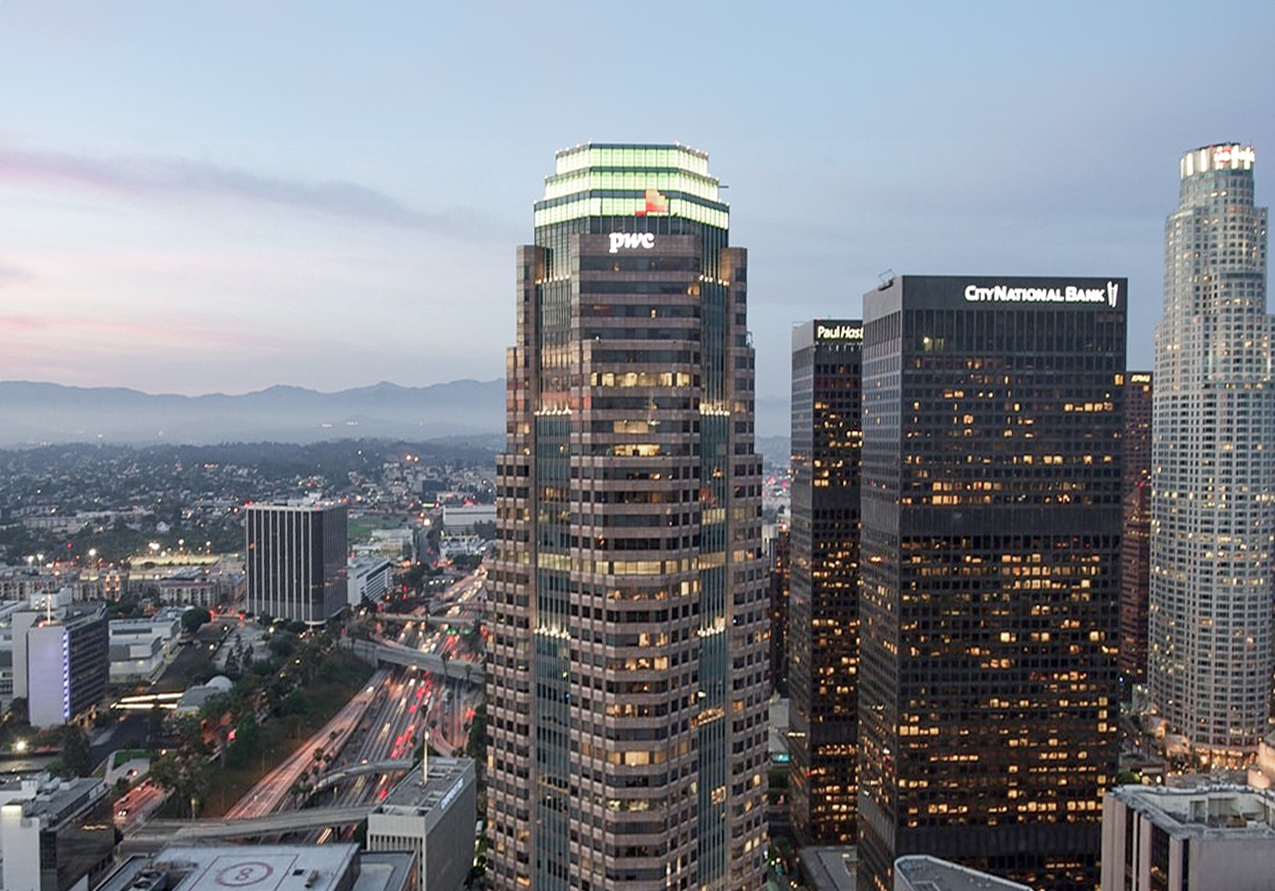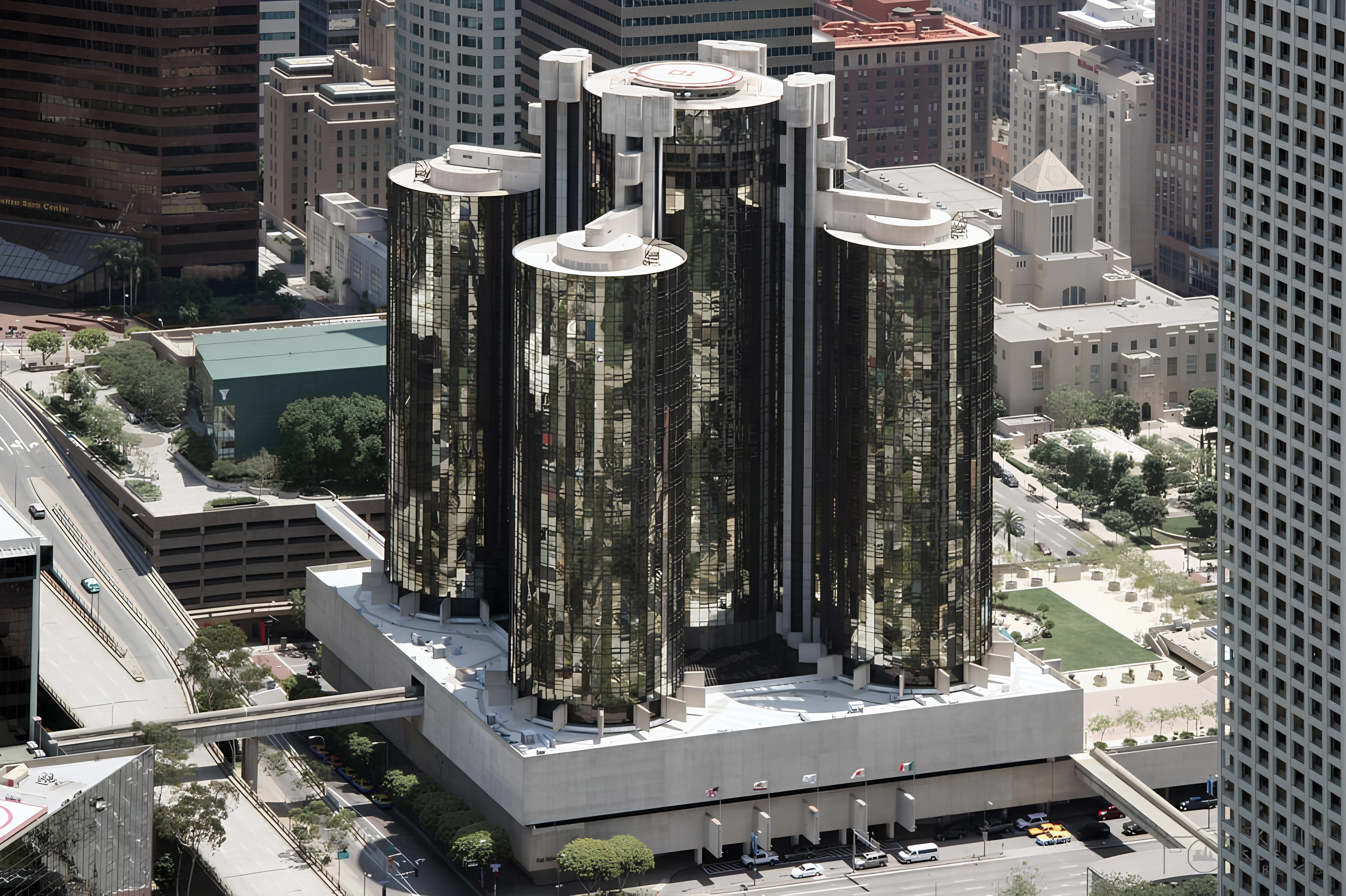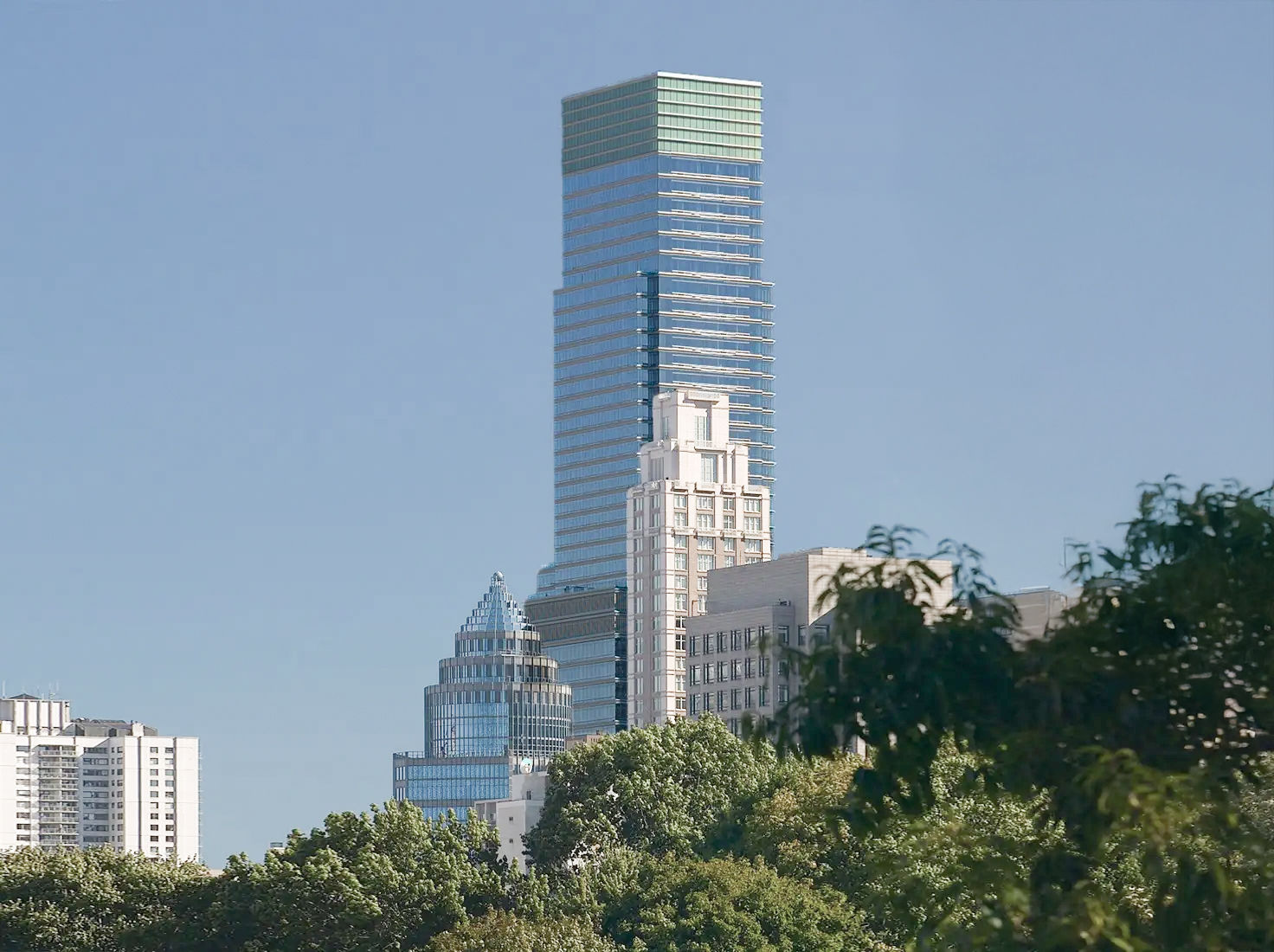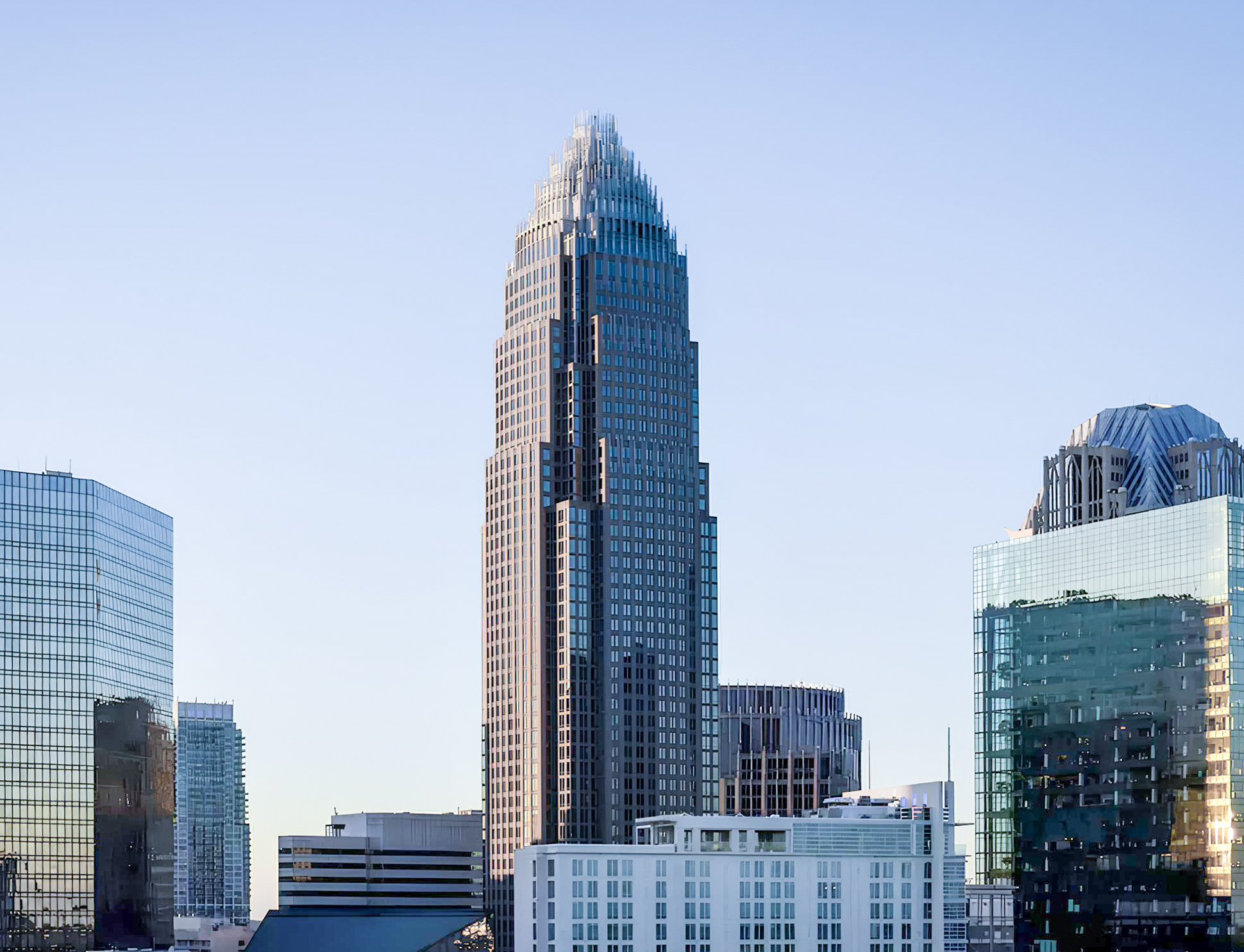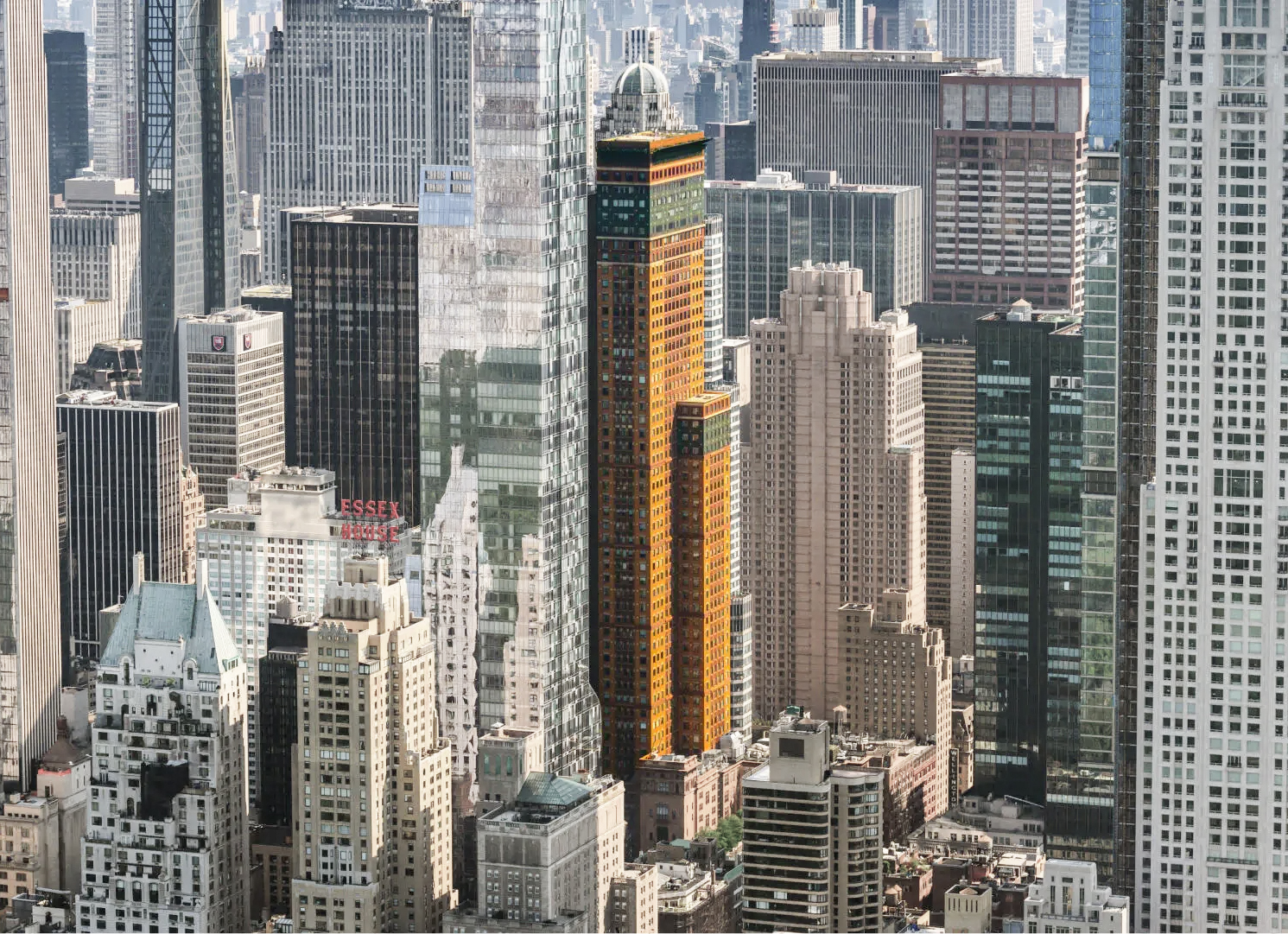The 777 Tower is a Postmodernist skyscraper designed by César Pelli & Associates, with as lead architect, in association with Langdon Wilson Architect, and built between 1988 and 1991, for a reported $250 million dollars, in Los Angeles, CA.
777 Tower is not the only name you might know this building by though. The building is, or has also been known as Citicorp Center.
Its precise street address is 777 South Figueroa Street, Los Angeles, CA. You can also find it on the map here.
The 777 Tower has received multiple architecture awards for its architectural design since 1991. The following is a list of such prizes and awards:
- Best High Rise Commercial Building Award in 1993
- LA Business Council Beautification Award in 1994
- (BOMA) Building of the Year Award in 1996
